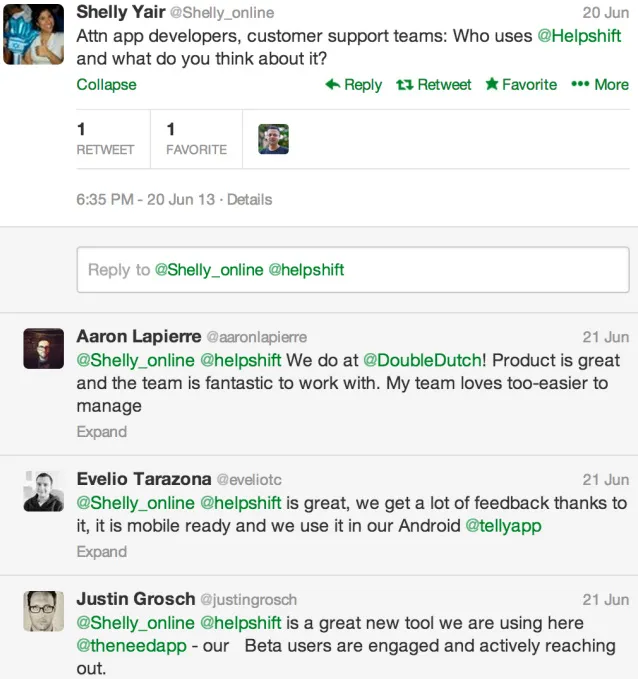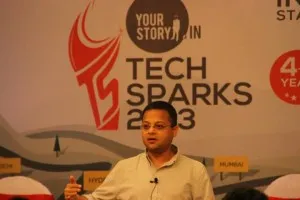Building a very large, long-term, deep-tech, global company from India - Abinash Tripathy, Helpshift
Founded by Abinash Tripathy, in 2009, Helpshift is an end-to-end mobile helpdesk based out of Pune and San Francisco. The first round of capital for Helpshift came in 2011, as seed funds of $500K from Nexus Venture Partners (NVP); and the second round of $2.75 million was led by True Ventures and NVP.

Elephant Catcher, driven by personal motivation “to build a very large, long-term, deep-tech company that has a global impact, from India,” and also to ensure that all his employees are a big equitable part of the company’s success.Checkout the ‘scale’ narrative of Helpshift and, in the process, get a glimpse into the mind of the founder, Abinash. After all, The Elephant Catchers are people who think and then go on to do things differently.
Challenges and excitement while building and growing Helpshift
I will limit the scope of this discussion to technology startups. IMHO, there are really 2 types of technology startups. Ones that go after a large existing market with a slightly different twist in product/ business model, and the others that create an entirely new market due to some huge underlying technology trend. To me, the latter is the most exciting; for, the potential to disrupt and create a large NEW market is far more challenging and exciting than the former.
At Helpshift, we are creating an entirely new market for customer engagement in mobile apps, and that is both challenging and exciting. The challenge is that whoever creates a new market has to lead the charge in educating and evangelising a market, which takes a lot of effort. It is exciting because there is so much upside potential, when your early customers start to validate your thesis.
The underlying platform shift that we noticed is the shift from Web to mobile apps. Every major brand now is going through this exercise. Starbucks recently announced that 10% of their US revenues are from their mobile app (Starbucks app allows users to pay for their coffee from their phone). Walgreens, the largest pharmaceutical retailer in the US, is seeing 30% of their digital revenues from their mobile app (the fastest growth in digital), and the main driver is that customers can now refill their prescriptions from their phones.
As customers start to engage with their smartphones via apps, every company in the world will have to face this new reality. Flipkart used Helpshift in their first foray in mobile, which was the Flyte ebook and music apps, and observed that 10-15% of their users used this channel daily to ask questions about their products, which resulted in less abandoned carts which is huge in retail. They quickly decided to put us in their main retail app which is scheduled for a Diwali release this year and yes we are really excited to see this happen. It is forward-looking companies like Flipkart that embrace a new technology like ours and then become our biggest evangelists.
The biggest challenge is that since mobile is an early market we have to do a lot more work in educating our potential customers on this new paradigm and what it means to them. However, I think that the biggest sales team I can have is our own customers; and, it is tweets like this (below) from our customers that energises me every day about the opportunity we have to create a massive company.

Starting up of Helpshift and team that is centre-stage
We are a team of 25 in India, and 6 in the US. We are geographically distributed in a way that our product team is largely in India; and, our sales and marketing team is close to our customers, in the US.

I come from 20 years of product experience in companies that were early in markets and had significant impact. I worked as an Internet technologist/ evangelist for Oracle Corporation in the US, when the web was getting created (1995), and saw the impact Oracle had in the enablement of the web 1.0 companies. Pretty much all the pre-dotcom web startups used Oracle as their underlying database technology. Then, I was part of a startup called Openwave which invented WAP (browsing in mobile phones) in 1999, and saw how rapidly we were able to put 1 billion browsers in phones and the impact of that. Pre 1999, phones were only used to talk and text. Today, phones are largely used to access Internet services, and Openwave had a huge role to play there.
All great tech entrepreneurs want to create something that a lot of people in the world find value in, and this is what drives me every day. It is not about the money…money is just a nice side-effect to having a big impact in whatever one does.
We started Helpshift as a lab called Infinitely Beta in late 2009 after we sold my previous startup Zimbra to Yahoo. This time, I wanted to create a company that is known in India as the place where the best hackers and artists meet and have a lot fun and create a company along the way. You can’t just create a company like this if you start working on a product idea and go to market right away as the pressures of scaling a company early just distracts you from creating a lasting culture.
So, I personally invested US$300K of my own and brought together some really amazing people just so we can play with technology and build whatever we thought was fun. I was very fortunate to meet my co-founder Baishampayan Ghose (BG), who is one of the most talented hackers in India, and we carefully crafted our strategy.
Very early, we decided that we are going to only hire other hackers and in a purely inbound fashion (in other words we will not go and recruit anyone). Everyone we hire has to desperately want to work with us and has to be a very passionate hacker/ designer who only cares about his/her craft. We set some ground rules that we will not hire anyone from the services industry etc.
We launched our first showcase product as Infinitely Beta called Paisa.com, which to this day is talked about in the tech/ design circles in India as one of those standout products from India. We used this showcase to recruit the next 10 people in the company who were all some of the best who were very curious as to who this team was that produced such an awesome product and simply emailed us asking if they can work with us.
Our hiring strategy largely remains unchanged today and all of our hires are people who really want to work with us. To this day, our website does not have a Jobs page, nor do we post any job posts or use recruiters. We have been able to keep our culture together largely because we find people like us with the same motivations that get attracted to our culture. This may change as we scale to the next level but our engineering interviews will continue to be the hardest in India, and we take our time to hire people. A typical hire for us takes 2-3 months of working with an individual before we make them an offer.
Size does not matter
Unlike other Indian companies, we do not believe that to build great products needs huge armies. We believe that small groups of highly talented people can outperform the largest teams in the world. This is what Silicon Valley culture is all about, and there is ample evidence to show that small startups almost always end up disrupting large armies.
I like to call this the “Special Ops” approach. When the US went in to Abbottabad to get the most wanted terrorist in the world, they relied on 16 Navy SEALs and did not send in their army. If we continue to be highly selective and only hire extremely talented people that are culturally similar to us, we can deliver far greater results.
I wrote a Quora post on how we hire in 2011 http://www.quora.com/Helpshift/How-did-Helpshift-cleverly-hire-talented-developers.
HR function – Hiring and letting go
We do not have HR and it is by design. I think HR as a job function in a high-tech company is fairly useless especially when we do not do any mass hiring. Hiring is a full-time activity for all of us at Helpshift. We are all involved in the hiring process constantly. We have had to let people go and it is always either because they are not a cultural fit or do not have the patience for a long-term company like us which is very measured in our growth strategy. We have fired people with just a week’s notice. It is a hard thing to do but is something every CEO should be comfortable with. The impact of one negative employee on the team as whole can be profound.
Culture

We have designed our hiring process to ensure we are only hiring people who love working in a flat organisation with zero politics. We are probably the only company in India that has a three-month internship period even for folks that come in with a ton of experience from great companies. BG and I instilled this early as we believe that ego is the worst enemy of an individual which stops them from focusing on the wrong things like title and compensations as opposed to learning and impact. So, every new employee at Helpshift starts at a salary lower than what they were making before, for three months, and has to prove that they are someone who can be part of us, long-term. Once they do, we bring them to above market and give them equity. We are one of those rare startups in India that gave away 20% of the company to employees before we raised our seed financing. We believe that every employee needs to be equitable and be a part of our success.
Scaling of intellect
This is the biggest part of our journey. We hire autodidacts who are people that are self-motivated and self-taught. They enjoy the intellectual exercise of learning and apply their learnings pragmatically. We are one of those rare companies that uses functional programming which is one of the hardest skills to come by in the tech industry. Almost all of our technology stack is very modern, which means that we cannot hire folks from the traditional tech talent pool in India. This is largely by choice, as it allows us to keep our hiring bar extremely high. We jump on all modern technologies and our team learns them and applies them every day. Our tech stack is something most startups aspire to do someday.
We use a variety of databases like mongoDB, hbase and redis to store data. All our middleware is written in Clojure (a modern LISP), and we have employ kafka as our queuing layer and storm for stream processing. Our web servers are based on nginx, and a custom server we wrote in GO and is front-ended by HAproxy for availability. We use elastic search for all our search features and a variety of tools like Chef for continuous deployment, and Jenkins for build management. We are big believers in employing the best and most appropriate tools to achieve the best price/ performance and to provide the best user experience to our customers. Everyone in our company has to use Emacs :-) We are pretty strict about this. Even our designers do. So, there is no excuse.
Market
We are in the luxurious position of having created a new market and controlling the pace. We launched last November (2012) in private beta and have about 1,300 companies using us now. All our marketing is 100% inbound now and will continue for some more time. The mobile market is still a very early market, made up of very small companies and they don’t like to be sold to.
Scaling up versus starting up – What’s different, what’s same?
They are fundamentally different. Starting up is about creating hypothesis, learning, iterating and improving in the effort to find a business model that can be repeated. Scaling up is about adding resources to a known formula to drive growth. We are not in the scale up stage yet. We are still starting up.
Motivation
I have been a part of two startups that went through a high-growth phase. I joined Openwave as a very early employee when the company was about 50, and within a year we had an IPO that valued the company at US$8 billion and grew to 2,000 employees. Zimbra was similar in that we went to 100 employees with 10s of millions in revenue in just 2 years, and were sold to Yahoo for US$350M. I have larger ambitions for Helpshift and we are in the perfect market to achieve this if we can execute. Scalability is a good problem to have but not rocket science. Finding a repeatable business model is the biggest challenge to overcome. Once we achieve that, adding resources to scale is a simple enough exercise. All we have to do in that stage is to make sure our hiring bar is never lowered. Companies usually fail to scale because they dilute their hiring standards.
Role of an investor
I agree with Vinod Khosla that most investors don’t add value. But, it is up to the entrepreneur to pick smart money as opposed to dumb money. Entrepreneurs that optimise for valuation and not for the right firm usually end up with bad experiences. Both Nexus and True Ventures have been amazing as our investment partners.







